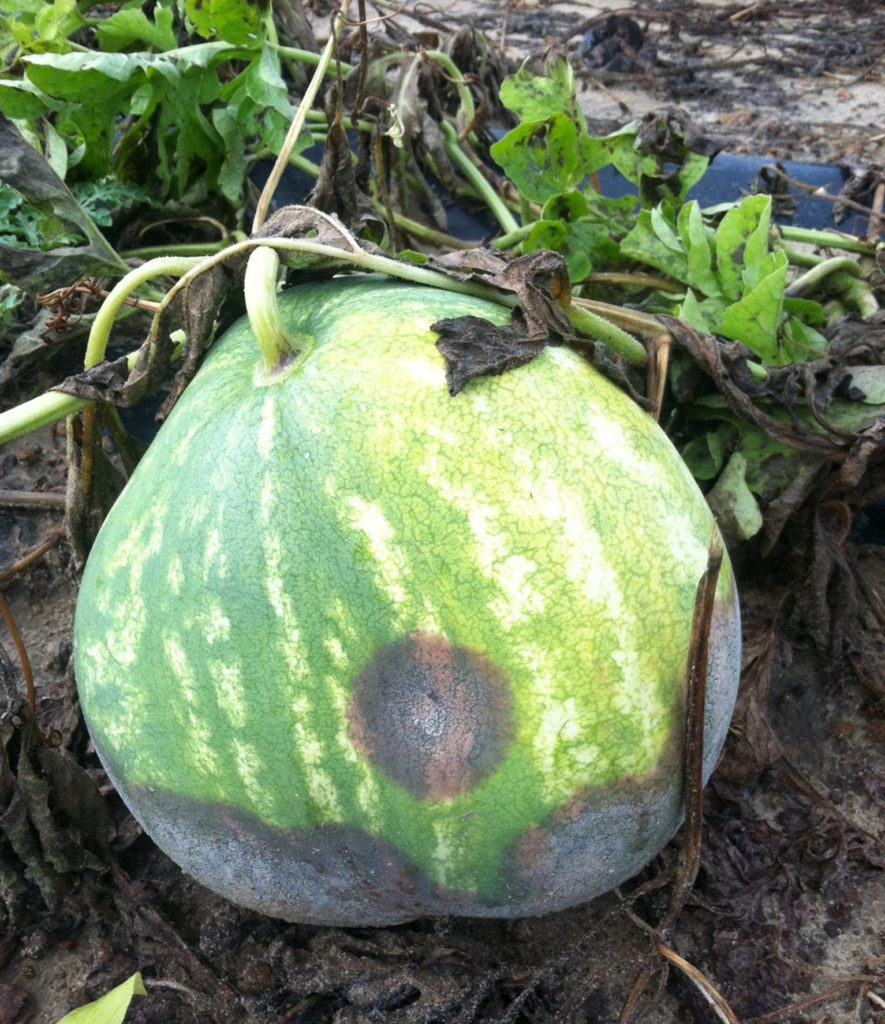By Clint Thompson
South Georgia watermelon producers should be wary of an uptick in disease pressure following heavy rainfall in recent weeks.

University of Georgia Extension vegetable plant pathologist Bhabesh Dutta highlights the two diseases that has his attention and should be the focus of growers moving forward.
“Our growers have already been alerted about downy mildew, phytophthora,” Dutta said. “I’m more concerned about phytophthora. You know what it can do; phytophthora capsici and phytophthora fruit rot. It can take down an entire field under severe conditions.”
Phytophthora fruit rot is a water mold that attacks the fruits of watermelon plants, making the popular vegetable inedible. It thrives in rainy weather, which was the case throughout South Georgia during a two-week period in June. It not only affects watermelons in the field, but also after harvest. Farmers could pick their fruit, have them packed and stored, and the fruit not display signs of the disease until after it was shipped.
“The bad thing about phytophthora, even though it might be brewing in the field in a small spot, you never know when this phytophthora can jump on those melons, and they get shipped. What happens in the shipping bins, they can propagate and infect the entire bin,” Dutta said. “What we have recommended to growers that if they have phytophthora, they need to figure out their risk mitigation policies or practices where they would pick around the phytophthora spots in the field and do a due diligence in manually grading them. If time permits and the market permits, keep them at least for a day and regrade them.
“Manually grading, picking and harvesting is very, very important and how you do it. That will dictate how we do this season.”









